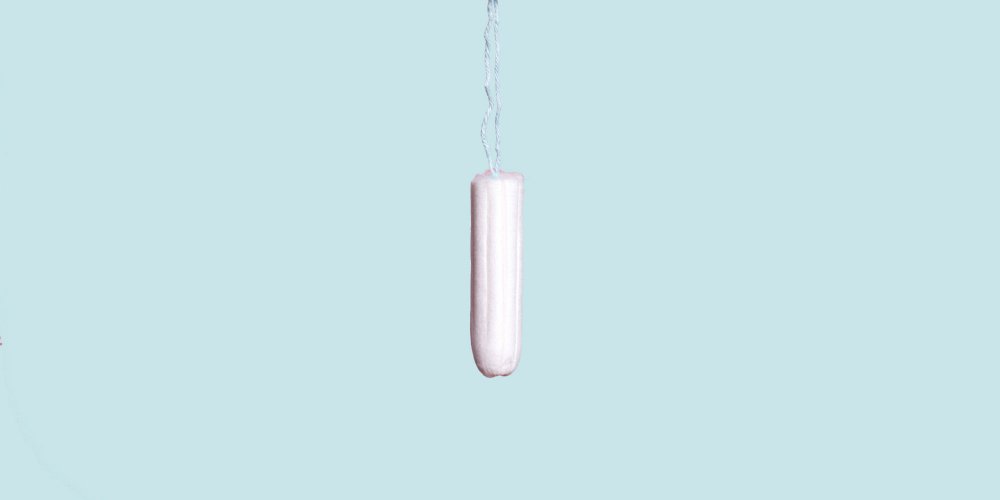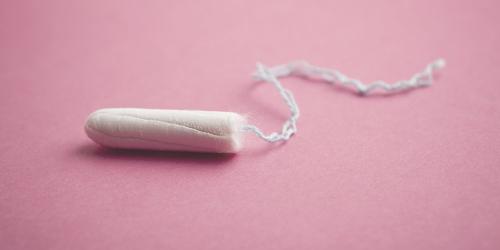On Monday, April 25, France 5 broadcast the shocking documentary "Buffon, our intimate enemy", directed by Audrey Gloaguen. This film "punch" evoked including the composition-so far very opaque- tampons and the serious consequences that the use of this hygienic protection can have on the health of women.
In addition to the thundering syndrome of toxic shock they are more and more often accused, the tampons could also be partly linked to the development of an intimate, painful and long-unknown disease: endometriosis.
Endometriosis: dioxin buffers, a risk factor
This chronic and painful disease affects 1 in 10 women of childbearing age. It concerns the endometrium, the lining of the uterus. During the menstrual cycle, it thickens in case of pregnancy, but if no fertilization occurs, it evacuates with the rules. Problem, in women with endometriosis, endometrial cells move up and arrive outside the uterus. Tissues formed from endometrial cells form and then invade surrounding organs such as the fallopian tubes, ovaries and more rarely the urinary and digestive system.
In 2005, Jean-François Heilier 1 , a toxicologist at the Catholic University of Louvain (UCL) in Brussels, and several experts including Dominique Lison - seen in the documentary Audrey Gloaguen- have demonstrated that dioxin, a toxic molecule found in tampons -but also present in our diet- was a risk factor for developing endometriosis (at 51.52 in the documentary).
For the purposes of their study, they analyzed data from three groups of women: a control group (21 women) and two groups of 50 women with endometriosis (peritoneal or deep endometriotic nodules). Those affected by the disease had a high level of dioxin in the blood. Results that suggest that vaginal mucosa is permeable to the toxin.
The vagina, an organ with great absorbent properties
Problem, no study has yet been conducted to know if the mucous membranes are actually permeable to dioxin or not.
Audrey Gloaguen therefore turned to an expert for whom this theory seems plausible (to '54 .40).
Head of the Department of Infertility and Reproductive Medicine at Keck School of Medicine (University of Southern California), Dr. Richard Paulson draws on one of his studies to demonstrate that estradiol hormone (an estrogen hormone) would be ten times more potent when introduced into the vagina instead of being taken orally.
In a brief comparison of the chemical structure of dioxin and estrogen, Dr. Paulson explains on screen that they are almost similar. In short, it is entirely possible, according to him, that the vagina can absorb the dioxin contained in a buffer.
It is therefore very likely that this is the case for other toxic substances.
The amazing composition of sanitary tampons
Toxic substances, buffers would contain tens.
In the words of Audrey Gloaguen, this hygienic protection is similar to a "real chemical bin" . As proof, the tests carried out for the needs of the documentary by Bernard Tailliez, independent scientific director, on several stamps of different brands. The latter notes the presence of nearly thirty chemicals, including phthalates (at 1.02.49).
To this "explosive" cocktail comes the addition of dioxin, a product of chlorine dioxide , a powerful bleaching agent used by some manufacturers.
This chemical molecule, classified POP (persistent organic pollutant), is not only considered one of the most dangerous chemicals in the world by the World Health Organization (WHO), but also as endocrine disruptor .
Increasing demand for transparency
Today widely criticized, the opacity concerning the composition of stamps has already given rise to the launch of a petition on Change.org 2 , in 2015, by Mélanie Doerflinger. This consumer required brands to inscribe the composition on the packaging.
In March 2016, it was the turn of the journalists of the magazine "60 million consumers" to launch a study on the subject 3 . Eleven references were analyzed and several "potentially toxic" residues were found in five of them.
Finally, in August 2016, the State Secretariat for Consumer Affairs had ordered tests on six brands. They revealed the presence of numerous substances harmful substances. The National Agency for Food Safety, Environment and Labor (ANSES) were responsible for assessing the risks. The results are expected in summer 2017.
More information on :
1 www.ncbi.nlm.nih.gov/pubmed/16781705
2 www.change.org/p/right-visible-the-composition-of-stamps-and-hygiene-services
3 https://www.60millions-mag.com/2016/02/23/tampons-and-protections-feminines-a-regulation-s-sets-10151




